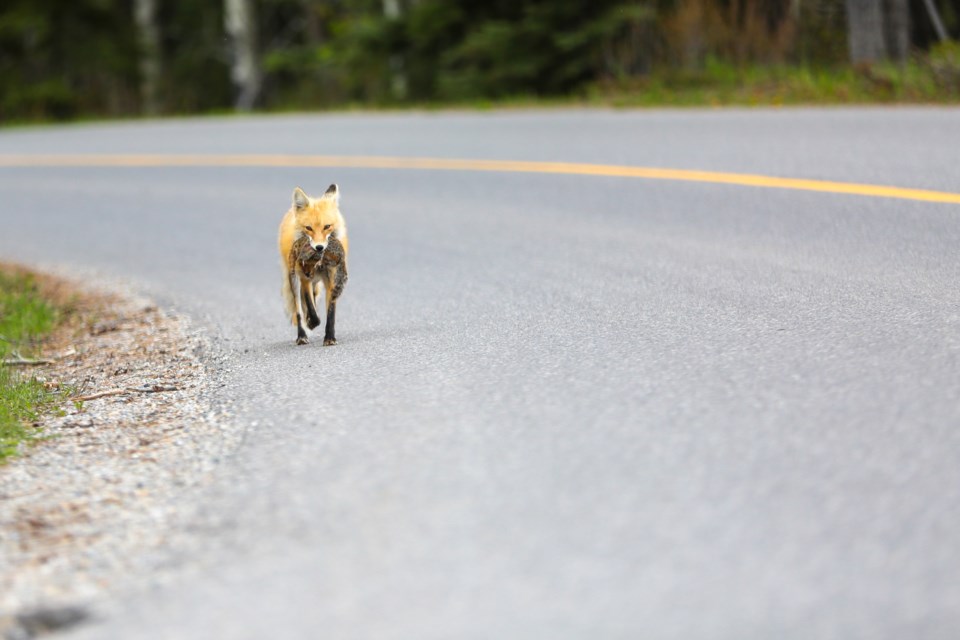BANFF – Denning foxes have prompted Parks Canada to close an area near Lake Minnewanka to give the animals space and security.
This is the second year the closure has been put in place for the red fox family near the busy reservoir, which is a popular tourist attraction in Banff National Park that attracts more than one million people a year.
Parks Canada wildlife experts say a remote camera has picked up images of a female fox coming back and forth to the den site, which has been dug into the embankment by the lakeshore.
“Hopefully, with luck, they will have more kits … she could be giving birth soon,” said Dan Rafla, a human-wildlife management specialist with Banff National Park.
“It’s one of the busiest spots and close to a built-up area and so the closure will give them a bigger buffer around the den site to be undisturbed.”
Anyone caught violating the closure could be charged under the Canada National Parks Act and face a fine in court of up to $25,000 if found guilty.
The closure went into effect on April 24 and remains in place until at least mid-August.
Last year was the first time the foxes denned on the embankment of Lake Minnewanka. At that time, the national park was shut down to tourism at the beginning the COVID-19 pandemic.
Foxes only use dens when they are breeding. When they are not about to give birth to young, they generally sleep in the open and keep warm by wrapping themselves with their long bushy tails.
“They seem accustomed and habituated to activity around them and decided to come back and use the same den,” Rafla said. “Obviously, they were able to successfully rear young last year.”
Red foxes typically have four to five kits, but it can range anywhere from one to up to 10 or 12.
The kits are born blind and don’t open their eyes until they are about two weeks old. After a month or so, the mother fox weans her kits off her milk and starts bringing pre-chewed food to the den for them to eat.
After about seven months, young red foxes are able to hunt on their own and leave their parents in search of their own territory.
“We don’t know the survival rate of the kits from last year,” Rafla said, noting a remote camera installed at the site last year captured images of four of five young.
“For most wildlife in their first year, the survival rate is not that great. There’s other challenges and other predators, and the risk and inexperience that doesn’t allow them to live to the next year.”
Red foxes are more active after the sun goes down, but it’s not unusual for them to be spotted during the day.
Their acute eyesight, hearing and sense of smell make them amazing hunters, able to trace prey like ground squirrels, mice or voles by the slightest movement.
Rafla said it’s critical people don’t feed the foxes or throw away garbage they could get into.
“They can survive on their own without interference – don’t feed them because it always ends up worse for the animals,” Rafla said.
“There’s ample natural food for the foxes to thrive and feed their young. Leave them alone and just respect the closure and their space.”
Parks Canada will continue to monitor the den site and fox activity. If the animals end up being harassed, wildlife experts may consider additional mitigations.
“We want to ensure the animals are safe and not harassed and can go about their business undisturbed,” Rafla said.
Read more from RMOToday.com



